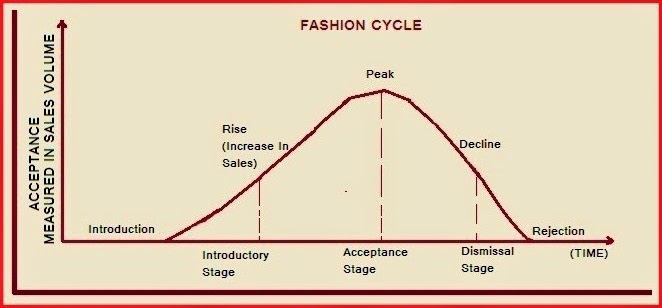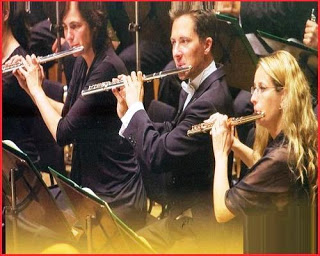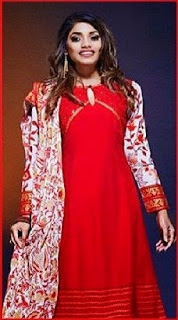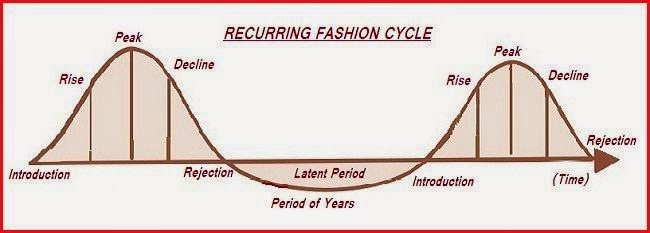Fashions do not always survive from year to year. Fashion designers generate a significant number of new styles for the consumers in each season. Creative designers convert their imagination by making lucrative dresses for consumers. Usually, fashion diversification is influenced by culture and social latitudes and has varied over time and place. Fashion designers are the people who design not only clothes but also design dreams. Some are discarded instantly by the consumer on the retail level or by the fashion media, but others are accepted for a time after a demonstration by procuring and wearing. Fashion cycles start when fabric manufacturers present their new samples of materials. They offer new colors, new fabric touches, and new designs.
2. Growth in Popularity:
When a new lucrative dress introduced by a fashion designer and worn by some choose celebrities and rich guy who has enough money to do an experiment and habituate to get media attention, mass people influenced by it that may draw attention in buyers, press or public. Most designers wish to sell their items at reasonable prices. But at the beginning stage designers have to sell the wearers at the higher price to recover their cost. The price takes a downward slope in the passage of time when the demand and supply go parallel. Eventually, they minimize the price again when the demand graph takes a downward peak. Furthermore, an increase in popularity of a style may depend on copying and modification. Some manufacturers may redesign their style by adding less expensive fabric and sell all the styles at lower prices. Some designers customized their trendy style to outfit the requirements and price range of their regular consumers. Permanent consumers are a die-heart fan of their wearers.
3. Mature of Popularity:
When a fashion or a particular design reaches, the height of its optimum level is called peak or matured stage. It may create much demand that inspires many producers to copy or modifications to drivers it at many price levels. By copying some designers became pleased, but others are indignant. There is a clear distance between modifications and knock-offs. Bulk production demands a possibility of mass acceptance. So, producers suspiciously analyze sales trends and consumer’s feedback before step into mass production because their customers want comfortable, durable and reasonable clothes that are in the mainstream of fashion.
sale. Sometimes outlet declares clearance sale. That time owners fix some sales racks of retail stores contain declining styles to lure customers with lucrative wearers.
In the final stage of the fashion cycle when users lost their passion for those design and turned to new trendy dresses is called obsolescence phase. The rejection, discarding, dismissal or disposal of a style occurred just because it is out of fashion or failed to generate customers attraction is also called consumer obsolescence. In these stage manufacturers stop production and retailers lost attraction due to consumers have no more interest. Rabindranath quoted that “fashion is temporary and style is permanent.”
Fashion cycle is an ongoing process. Fashion moves through different stages during its cycles of existence. Fashion acceptance is generally called a fashion cycle. Think deeply the fashion which has made craze among young generation today but may not hold its popularity in next year. The nature of fashion cycle differs with each trend and very difficult to detect the duration of its tenure. Fashion movement may influence by following factors–
>> Publicity or promotion of the product
>> Development of new fabrics or fibers
>> Social or economic factors
Fashion Cycle Lengths:
But at the current trend fashion cycles have no particular lengths. Because human fashion trends are changing rapidly. But we can assume them with type of acceptance. The fashion cycle is usually represented as a bell-shaped curve with 5 stages.
1) Flop Cycle- No acceptance
2) Fad Cycle- Short acceptance
3) Normal Cycle- Medium acceptance
4) Ford Cycle- Strong acceptance
5) Classic Cycle- Continuing acceptance
Classic: It is remarkable that some style retains its appeal stable in fashion cycle. An example is denim wearers or classic Hawaii shirt. We can consider it as everlasting. The demands of these styles never turn into completely out of date. The attraction might increase or decrease slightly but never decay with the passage of time.
Fad: This is short lived fashion which keeps the interest of the consumers for a short period. The user group is limited and the price is also cheap but users appeal declaims day by day as they feel fatigue. The tenure of this stage is concise and the customer feels monotonous after some short time due to product supply increases in comparison to demand which makes the wearers out of fashion outlet.
Fashion designers are frequently going back and forth in time for stimulating creativity. It has been observed that some fashions come back years later and reintroduced in target group newly. The new fashion is being introduced on the field of old fashion. But, Old fashion does not disappear completely. Sometimes fashion designers drag minimum pattern in new wearers from the old wearers. We could almost say it values addition to the product. Changes are applied in pattern, design, fabric, panels. Vice versa is also true. Thus, it recurs. Thus, some 60s, 70s, 80s design already back and being used on apparels. As an example now tight fitting shirt or velvet pant are getting popular again. These are called slim fitting or customized fitting.







Leave a Reply
You must be logged in to post a comment.